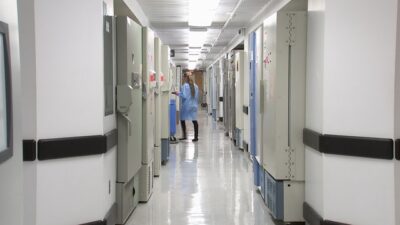The U.S. needs as many nurses as it can get and many of them are coming from overseas. More than 5,000 international nurses were waiting for final visa approval, according to a September report from the American Association of International Healthcare Recruitment.
But the number of foreign nurses coming to America may have just reached its peak. The State Department recently announced that all the available green card slots for nurses have been filled and that only people who applied prior to June 1, 2022 will be eligible to continue with visa interviews, even if the applicant has already been offered a job in the U.S.
The quota for foreign nurses will reset in October at the start of the next fiscal year. More recent applications will go back in line once the queue reopens, which could result in a large backlog of immigration cases.
Tens of thousands of nurses could help fill positions across the U.S. as a way of easing the ongoing staffing shortage. Experts predict the industry will need around 200,000 new nurses every year through 2030 to meet demand.
“Prior to COVID we had a nursing shortage. During COVID, it’s estimated that we lost about 100,000 nurses,” said Patty Jeffrey, a registered nurse and president of the American Association of International Healthcare Recruitment. “If we don’t have a steady flow of these international nurses to enter the country and provide services, this is dire for our hospitals, who have become more dependent on this workforce.”
Foreign-born nurses account for roughly 15% of the country’s nursing workforce. All applicants need an EB-3 visa and a permanent residency green card to enter the country. The green card must include all occupations which require at least an associate’s degree but not a master’s degree.
But the immigration quota for foreign nurses hasn’t changed since 1990. The number of EB-3 visas is limited to 28.6 percent of all employment-based visas, which comes out to around 40,000 applicants a year.
However, nurses aren’t considered essential workers when it comes to immigration. They are competing for slots against both skilled and unskilled workers.
Chris Musillo, an immigration attorney and managing partner at Musillo Unkenholt, said those who have started the interview process will still be able to enter the country by early 2024 at the latest.
He is telling hospitals that if they start sponsoring a nurse today, they won’t be able to come to the U.S. until 2024 or even 2025 at the latest.
“This is a multi-year process to get people there, our hospitals were depending on [these individuals], and now because of the retrogression they won’t receive them,” said Jeffrey.
But industry leaders say the backlog of cases is hurting patients and staff.
“To freeze the ability for foreign-born nurses to immigrate to the U.S. using the EB-3 visa eliminates a valuable option for bringing more qualified workers into the aging services sector,” said Ruth Katz, senior vice president of policy at LeadingAge, the association of nonprofit aging services providers.
“This visa retrogression shuts off one meaningful workforce solution, and, ultimately, harms older adults and families who cannot access needed care and services. Without staff, there is no care,” she added.
The number of foreign nurses increased during the COVID-19 pandemic because other visa categories were going unused, which made more room for employment-based visas.
Musillo and Jeffrey thought they found a solution to the problem when the Healthcare Workforce Resilience Act passed the House of Representatives on a bipartisan basis, but it never made it out of the Senate Judiciary Committee.
“This is a healthcare problem, but unfortunately the solution is an immigration solution,” Jeffrey said.
















